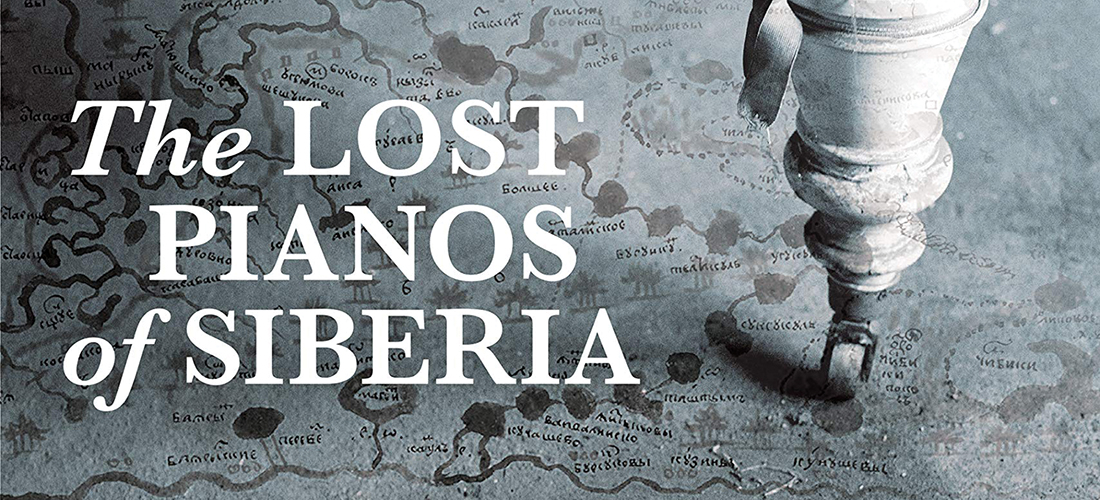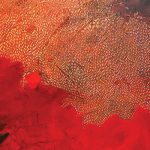
Siberian Odyssey
Exploring the exotic and the desolate
By Stephen E. Smith
“Loss of Travel Causing Americans to Feel Stress and Anxiety” a recent MSN headline blared. If that’s the case, here’s a possible pandemic-proof cure: The Lost Pianos of Siberia, by Sophy Roberts, a beautifully written travelogue/social history that will likely transport the reader to heretofore unknown locales.
You can’t travel much farther afield than Siberia, the wasteland to which tsarist political prisoners were exiled and in which purged Soviet dissidents disappeared into gulags surrounded by ice, swamps, mosquitoes and intellectual sterility. Much of what the average American knows about Siberia — if he or she knows anything at all — is based on the movie Doctor Zhivago, which wasn’t set in Siberia, or Aleksandr Solzhenitsyn’s A Day in the Life of Ivan Denisovich, which was, and that’s unfortunate, since Siberia contains an 11th of the world’s land mass, the largest continuous forest, the longest railroad, the biggest lake, the coldest city, and an exotic ethnic mix that’s bewildering even by American standards.
So why would a British journalist travel to Siberia to find lost pianos? Roberts isn’t an authority on the evolution of the instrument or a connoisseur of the finer points of piano construction or restoration. She isn’t even an accomplished pianist. Although she never overtly states her motivation, the reader is left with the impression that the book, in addition to being immensely entertaining and informative, is a testament to the power of music in the most adverse circumstances man can conjure. Simply stated, Roberts went looking for lost pianos in the most desolate place on the planet and wrote a book about what she found.
The narrative is organized around physical locations, social histories and characters. “The pull of private histories is always present in Siberia,” she writes. “Every face informs the enigmatic texture of a place where legacy of exile lingers, like the smell of incense, or the feeble gleam of traffic lights, with the complexity of Russia’s identity, and the mix of Europe and Asia, evident not just in the jumble of architecture of the Siberian baroque church I stood on top of in a snow-breeze in winter, but in the routes reaching out from every side.”
Typical of Roberts’ happier discoveries is the story of Maria Volkonskaya. When Maria was forced into exile in the 1850s with her Decembrist husband, she took a clavichord, dragging it on a sledge. Once settled in Irkutsk, one of the largest cities in Siberia, she opened a hospital and concert hall, where recitals became a social force in the region. Roberts visits Maria’s home, now a museum, and discovers a pyramid piano shaped like a concert piano turned up against the wall (the original clavichord had long since disappeared into history) and a Lichtenthal owned by Maria.
When played the Lichtenthal “behaved awkwardly,” but the muffled notes lift Roberts into lyricism: “The keys were sticky, like an old typewriter gluey with ink. He struck the keys until the softened notes — muted by layers of dust, perhaps, or felt that had swollen in the damp — started to appear. At first the sound was reed-thin, no louder than the flick of a fingernail on a bell. Inside the piano, the amber wood still gleamed, the strings’ fragile tensions held in place by tiny twists around the heads of golden, round-headed tuning pins.”
Chapter 8, “The Last Tsar’s Piano: The Urals,” is a predictable rehashing of the Russian Revolution and the transport of the Romanovs to Ekaterinburg. The Tsarina played the piano, an ebony instrument, perhaps a Russian made Schröder, which disappeared along with the Romanovs and the Ipatiev House in which they were executed. Ironically, the body of Rasputin, the Tsarina’s personal mystic, was disinterred, stuffed into an old piano and burned.
Maxim Gorky, who knew something about suffering, wrote of the “genuine horrors” of everyday life in his native Russia, and certainly there are examples aplenty in Roberts’ telling. While visiting Kiakhta, a city located on the Russian-Mongolian border, she describes gruesome deaths by bayonet during the tsarist and Soviet eras. Prisoners were poisoned and shoved alive into bakers’ ovens. Many exiles were sprayed with water and frozen to death so as not to waste bullets.
Near Tomsk, one of the oldest cities in Siberia, she hears stories of a family of “Old Believers,” examples of Slavic civilization before the introduction of Westernizing reforms in the 18th century, who had retreated so far into the snowy taiga of the western Sayan Mountains that they lived in complete isolation until discovered in the late 1970s. They knew nothing of Stalin and the moon landings, which they didn’t believe anyway, and thought cellophane was crumpled glass.
In describing Sakhalin Island near Aleksandrovsk in the North Pacific Ocean, she quotes Chekhov: “A dreadful, hideous place, wretched in every respect, in which only saints or profoundly perverse people could live of their own free will.” Vlas Doroshevick, one of Russia’s most popular and widely read journalists of the 20th century, described Sakhalin as “perhaps the most foul hole as exists on earth.”
On the Yamal Peninsula, Roberts observed abandoned “skeletons of iron, diggers, lorries, and drilling machines stuck in hollows of land from Yamal’s vast natural gas fields” — a desolate place that “felt close to the start of time.” The forsaken landscape of Kolyma “felt like the saddest place on the planet.”
And so it goes: the Altai Mountains, Harbin, Novosibirsk, Akademgorodok, Kamchatka, Khabarovsk, etc. — place names so foreign they’re almost unpronounceable.
Roberts spent two years wandering the inhospitable wilderness of Siberia, and her powers of description bring those locales and their histories to life. There may have been pianos yet undiscovered, but Russian authorities eventually became suspicious of her “lost pianos” rationale, and she was ordered out of the country. Riding to the airport, she studied the texture of the skull of a man sitting in front of her. It was “like a brain exposed. The image stayed with me, along with the sight of a handgun in our driver’s glove compartment, the swelling in the land from mass graves, and the statues of Lenin in Kadykchan with half his face shot away.”
There are disturbing, indelible images in The Lost Pianos of Siberia, visions of what Gorky called the “grotesquely terrible.” But there are also touches of humor and occasional moments of beauty. If Roberts’ descriptions of Siberia don’t magically cure the stress and anxiety of living in pandemic America, thoughtful readers might well find they sleep a little more soundly. OH
Stephen E. Smith is a retired professor and the author of seven books of poetry and prose. He’s the recipient of the Poetry Northwest Young Poet’s Prize, the Zoe Kincaid Brockman Prize for poetry and four North Carolina Press Awards





